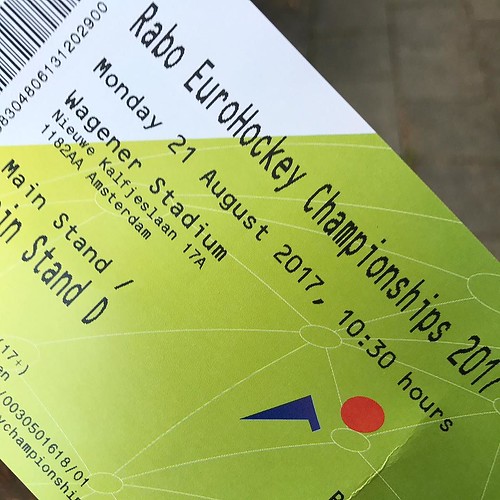A cancer stem cell phenotype in breast cancer [19]. However, the role of Twist2 in promoting breast cancer invasion and metastasis has not been established in the context of the breast microenvironment. In addition, the identification and clinical relevance of Twist2 in breast cancer is not known. We showed that Twist2 was up-regulated in human primary 25033180 breast carcinoma tissues compared with the matched normal breast tissues. Twist2 was expressed mostly in cytoplasm as demonstrated by immunohistochemical (IHC) assay in tissue microarray. Cytoplasmic Twist2 was associated with tumor histological type, the TNM clinical stage and tumor metastasis. Our study showed that, in some cases of invasive ductal breast carcinoma, Twist2 were mainly localized in cytoplasm of cancer cells expressing E-cadherin at tumor center and the lymph metastases. In contrast, nuclear Twist2 were detected in cancer cells located at the invasive margins of primary breast cancer. But the nuclear Twist2 positive cells surrounding the lymph Hypericin metastases showed loss of E-cadherin at the tumor invasion fronts. In this study we report that Twist2 promotes breast cancer invasion through loss of E-cadherin. Our data suggested that there was a link between nuclear Twist2 and EMT and the EMT process depends  on Twist2 cellular location. These results demonstrate an important role of Twist2 in breast cancer invasion and indicate that Twist2 may be a new EMT indicator for dissemination of breast cancer.Results Twist2 is up-regulated in breast cancerTo determine Twist2 expression in breast cancers, we initially performed Western blot in human breast carcinoma samples and matched normal breast tissues. We collected 25 cases of ductal breast carcinoma, 4 cases of lobular carcinoma, 3 cases of mixed breast cancer, and 7 normal breast tissues without breast disease from Zhongshan Hospital of Medical College of 842-07-9 site Xiamen University. In these fresh breast cancer tissues, Twist2 showed up-regulation in breast carcinomas as demonstrated by western blot analysis (Figure 1A). We then analyzed the expression and location of Twist2 on the matched breast cancer tissues and normal tissues by immunohistochemical staining. No positive expression of Twist2 was detected in 7 normal breast samples or adjacent normal breast tissues in 32 breast cancer patients. In contrast, Twist2 was detected in breast carcinoma tissues (Figure 1B). These results indicate up-regulation of Twist2 in these breast carcinomas.of normal breast tissue, 6 cases of fibroadenoma, 13 cases of mammaryadenosis, 16 cases of mastitis, and 141 cases of breast cancer. Our results showed that there is no expression of Twist2 in normal breast tissues (0 , 0 of 7 cases), weak expression of Twist2 in benign breast diseases including mammaryadenosis, fibroadenosis, and
on Twist2 cellular location. These results demonstrate an important role of Twist2 in breast cancer invasion and indicate that Twist2 may be a new EMT indicator for dissemination of breast cancer.Results Twist2 is up-regulated in breast cancerTo determine Twist2 expression in breast cancers, we initially performed Western blot in human breast carcinoma samples and matched normal breast tissues. We collected 25 cases of ductal breast carcinoma, 4 cases of lobular carcinoma, 3 cases of mixed breast cancer, and 7 normal breast tissues without breast disease from Zhongshan Hospital of Medical College of 842-07-9 site Xiamen University. In these fresh breast cancer tissues, Twist2 showed up-regulation in breast carcinomas as demonstrated by western blot analysis (Figure 1A). We then analyzed the expression and location of Twist2 on the matched breast cancer tissues and normal tissues by immunohistochemical staining. No positive expression of Twist2 was detected in 7 normal breast samples or adjacent normal breast tissues in 32 breast cancer patients. In contrast, Twist2 was detected in breast carcinoma tissues (Figure 1B). These results indicate up-regulation of Twist2 in these breast carcinomas.of normal breast tissue, 6 cases of fibroadenoma, 13 cases of mammaryadenosis, 16 cases of mastitis, and 141 cases of breast cancer. Our results showed that there is no expression of Twist2 in normal breast tissues (0 , 0 of 7 cases), weak expression of Twist2 in benign breast diseases including mammaryadenosis, fibroadenosis, and  mastitis (25 , 7 of 28 cases), and moderate to strong expression of Twist2 in malignant tumor (73.94 , 105 of 141 cases). This data indicated Twist2 expression was preferentially increased in breast cancer. Twist2 is overexpressed in a majority of breast carcinomas. The positive rates are as following:74.78 ductal carcinomas (86 of 115 cases),68.18 lobular carcinomas (15 of 22 cases), and 100 squamous-cell carcinomas (4 of 4 cases) (Table 1). Twist2 expression also increased significantly with the TNM clinical stage classification as following:50 stage 0 (11 of 22 cases), 68.49 stage I/II (50 of 73 cases), 95.65 stage III/IV (44 of 46 cases) (Table 1). Twist2 expression.A cancer stem cell phenotype in breast cancer [19]. However, the role of Twist2 in promoting breast cancer invasion and metastasis has not been established in the context of the breast microenvironment. In addition, the identification and clinical relevance of Twist2 in breast cancer is not known. We showed that Twist2 was up-regulated in human primary 25033180 breast carcinoma tissues compared with the matched normal breast tissues. Twist2 was expressed mostly in cytoplasm as demonstrated by immunohistochemical (IHC) assay in tissue microarray. Cytoplasmic Twist2 was associated with tumor histological type, the TNM clinical stage and tumor metastasis. Our study showed that, in some cases of invasive ductal breast carcinoma, Twist2 were mainly localized in cytoplasm of cancer cells expressing E-cadherin at tumor center and the lymph metastases. In contrast, nuclear Twist2 were detected in cancer cells located at the invasive margins of primary breast cancer. But the nuclear Twist2 positive cells surrounding the lymph metastases showed loss of E-cadherin at the tumor invasion fronts. In this study we report that Twist2 promotes breast cancer invasion through loss of E-cadherin. Our data suggested that there was a link between nuclear Twist2 and EMT and the EMT process depends on Twist2 cellular location. These results demonstrate an important role of Twist2 in breast cancer invasion and indicate that Twist2 may be a new EMT indicator for dissemination of breast cancer.Results Twist2 is up-regulated in breast cancerTo determine Twist2 expression in breast cancers, we initially performed Western blot in human breast carcinoma samples and matched normal breast tissues. We collected 25 cases of ductal breast carcinoma, 4 cases of lobular carcinoma, 3 cases of mixed breast cancer, and 7 normal breast tissues without breast disease from Zhongshan Hospital of Medical College of Xiamen University. In these fresh breast cancer tissues, Twist2 showed up-regulation in breast carcinomas as demonstrated by western blot analysis (Figure 1A). We then analyzed the expression and location of Twist2 on the matched breast cancer tissues and normal tissues by immunohistochemical staining. No positive expression of Twist2 was detected in 7 normal breast samples or adjacent normal breast tissues in 32 breast cancer patients. In contrast, Twist2 was detected in breast carcinoma tissues (Figure 1B). These results indicate up-regulation of Twist2 in these breast carcinomas.of normal breast tissue, 6 cases of fibroadenoma, 13 cases of mammaryadenosis, 16 cases of mastitis, and 141 cases of breast cancer. Our results showed that there is no expression of Twist2 in normal breast tissues (0 , 0 of 7 cases), weak expression of Twist2 in benign breast diseases including mammaryadenosis, fibroadenosis, and mastitis (25 , 7 of 28 cases), and moderate to strong expression of Twist2 in malignant tumor (73.94 , 105 of 141 cases). This data indicated Twist2 expression was preferentially increased in breast cancer. Twist2 is overexpressed in a majority of breast carcinomas. The positive rates are as following:74.78 ductal carcinomas (86 of 115 cases),68.18 lobular carcinomas (15 of 22 cases), and 100 squamous-cell carcinomas (4 of 4 cases) (Table 1). Twist2 expression also increased significantly with the TNM clinical stage classification as following:50 stage 0 (11 of 22 cases), 68.49 stage I/II (50 of 73 cases), 95.65 stage III/IV (44 of 46 cases) (Table 1). Twist2 expression.
mastitis (25 , 7 of 28 cases), and moderate to strong expression of Twist2 in malignant tumor (73.94 , 105 of 141 cases). This data indicated Twist2 expression was preferentially increased in breast cancer. Twist2 is overexpressed in a majority of breast carcinomas. The positive rates are as following:74.78 ductal carcinomas (86 of 115 cases),68.18 lobular carcinomas (15 of 22 cases), and 100 squamous-cell carcinomas (4 of 4 cases) (Table 1). Twist2 expression also increased significantly with the TNM clinical stage classification as following:50 stage 0 (11 of 22 cases), 68.49 stage I/II (50 of 73 cases), 95.65 stage III/IV (44 of 46 cases) (Table 1). Twist2 expression.A cancer stem cell phenotype in breast cancer [19]. However, the role of Twist2 in promoting breast cancer invasion and metastasis has not been established in the context of the breast microenvironment. In addition, the identification and clinical relevance of Twist2 in breast cancer is not known. We showed that Twist2 was up-regulated in human primary 25033180 breast carcinoma tissues compared with the matched normal breast tissues. Twist2 was expressed mostly in cytoplasm as demonstrated by immunohistochemical (IHC) assay in tissue microarray. Cytoplasmic Twist2 was associated with tumor histological type, the TNM clinical stage and tumor metastasis. Our study showed that, in some cases of invasive ductal breast carcinoma, Twist2 were mainly localized in cytoplasm of cancer cells expressing E-cadherin at tumor center and the lymph metastases. In contrast, nuclear Twist2 were detected in cancer cells located at the invasive margins of primary breast cancer. But the nuclear Twist2 positive cells surrounding the lymph metastases showed loss of E-cadherin at the tumor invasion fronts. In this study we report that Twist2 promotes breast cancer invasion through loss of E-cadherin. Our data suggested that there was a link between nuclear Twist2 and EMT and the EMT process depends on Twist2 cellular location. These results demonstrate an important role of Twist2 in breast cancer invasion and indicate that Twist2 may be a new EMT indicator for dissemination of breast cancer.Results Twist2 is up-regulated in breast cancerTo determine Twist2 expression in breast cancers, we initially performed Western blot in human breast carcinoma samples and matched normal breast tissues. We collected 25 cases of ductal breast carcinoma, 4 cases of lobular carcinoma, 3 cases of mixed breast cancer, and 7 normal breast tissues without breast disease from Zhongshan Hospital of Medical College of Xiamen University. In these fresh breast cancer tissues, Twist2 showed up-regulation in breast carcinomas as demonstrated by western blot analysis (Figure 1A). We then analyzed the expression and location of Twist2 on the matched breast cancer tissues and normal tissues by immunohistochemical staining. No positive expression of Twist2 was detected in 7 normal breast samples or adjacent normal breast tissues in 32 breast cancer patients. In contrast, Twist2 was detected in breast carcinoma tissues (Figure 1B). These results indicate up-regulation of Twist2 in these breast carcinomas.of normal breast tissue, 6 cases of fibroadenoma, 13 cases of mammaryadenosis, 16 cases of mastitis, and 141 cases of breast cancer. Our results showed that there is no expression of Twist2 in normal breast tissues (0 , 0 of 7 cases), weak expression of Twist2 in benign breast diseases including mammaryadenosis, fibroadenosis, and mastitis (25 , 7 of 28 cases), and moderate to strong expression of Twist2 in malignant tumor (73.94 , 105 of 141 cases). This data indicated Twist2 expression was preferentially increased in breast cancer. Twist2 is overexpressed in a majority of breast carcinomas. The positive rates are as following:74.78 ductal carcinomas (86 of 115 cases),68.18 lobular carcinomas (15 of 22 cases), and 100 squamous-cell carcinomas (4 of 4 cases) (Table 1). Twist2 expression also increased significantly with the TNM clinical stage classification as following:50 stage 0 (11 of 22 cases), 68.49 stage I/II (50 of 73 cases), 95.65 stage III/IV (44 of 46 cases) (Table 1). Twist2 expression.
Sodium channel sodium-channel.com
Just another WordPress site
